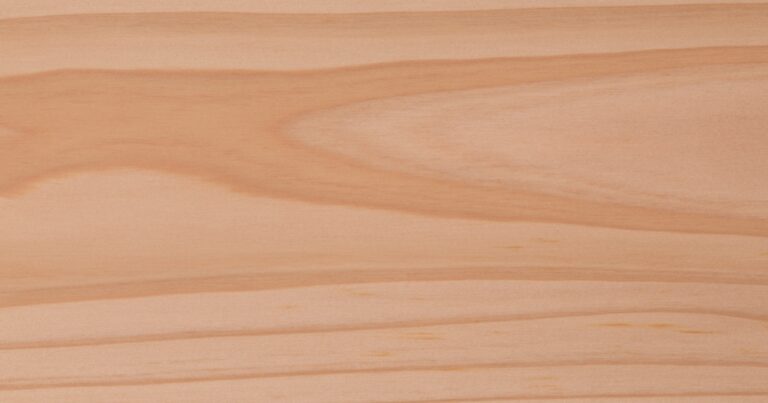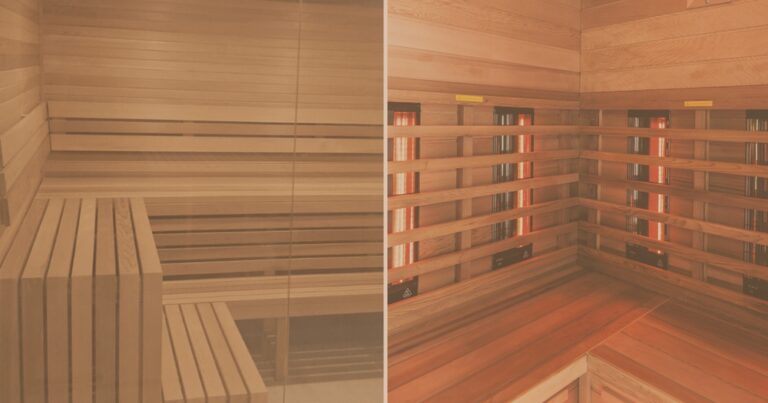A custom sauna helps you take your health and wellness to the next level. With your very own sauna where you want it, you can walk in anytime to soothe sore muscles and joints, remove toxins from the body, relax, and let the stress fade away.
But what should you consider before building a custom sauna, and are there building codes for custom saunas?
This article will answer these questions. We’ll also examine the cost of custom saunas, customization options for custom saunas, the installation process of custom saunas, and how to maintain custom saunas.
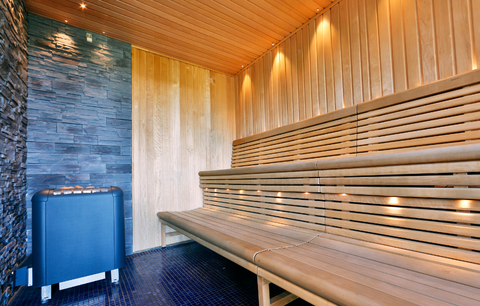
What are the factors to consider before building a custom sauna?
Building a custom sauna requires considering several factors, such as the following:
Sauna type
There are different types of saunas, such as Traditional Finnish saunas, steam saunas, and infrared saunas. Each type has its own benefits and drawbacks.
For example, a traditional Finnish wood-burning sauna is an example of a dry sauna that does not require running water.
So, it has low humidity levels, but you’ll need to tend the fire as it goes. On the other hand, steam saunas do not come with the hassle of tending a fire, but they require water and result in high humidity.
Thus, one of the first considerations when building a custom sauna is the type of sauna you want. You need to choose the sauna type that suits your preferences regarding heating and humidity levels.
Heating system
Decide on a heat source for your sauna. Traditional saunas use wood-burning stoves or electricity heating systems. Some saunas use gas and infrared heaters.
When choosing a heating system, consider the cost, energy efficiency, and ease of use.
For example, wood is a cheaper fuel, especially for outdoor saunas, but it requires more attention. On the other hand, electricity is very easy to work with.
Sauna location
Another thing to consider is where you want the custom sauna. Do you want an indoor sauna located somewhere in your house or an outdoor sauna (located in your own backyard)?
These days, there are even mobile saunas. You can hook a mobile sauna to your truck and take the premium heat anywhere – camping, frozen lake, etc.
Your desired sauna type may also impact your location. For example, you dont have to install dry saunas near a plumbing system.

Size of the space
Determine the available space for your custom sauna. For this, consider the size of the sauna heater, benches, and walking space.
As a general rule, allow two feet of bench space per person. However, for a small sauna, your space should be about six feet by six feet and be seven feet high.
Building material
Different materials are used to build saunas, and each one comes with its pros and cons. The material you want for your sauna is another factor to consider.
When choosing materials, you should consider resistance to decay, appearance, thermal comfort, and aroma.
Cedar wood is the best material in this regard, as it is very resistant to decay and does not give off harmful fumes when heated. But because it can be pricey, other popular options include hemlock, basswood, poplar, and pine.
Maintenance requirement
The maintenance requirements of the sauna should inform your choice of sauna type. True, all saunas require regular cleaning and maintenance of the heating elements to ensure they function efficiently and safely. However, the different sauna types have varying maintenance needs.
For example, traditional saunas with wood-burning stoves require regular cleaning of ashes and occasional chimney maintenance. Electrically heated saunas require fewer maintenance tasks, while infrared saunas have even lower maintenance needs.
That said, your choice of sauna type should align with your willingness and ability to perform regular upkeep.
Permits and regulations
Local building codes and regulations ensure that saunas meet safety standards. So, check these regulations when considering building a custom sauna to know the safety features you must include and the permits you must obtain.
Budget
The cost of custom saunas can range from affordable to luxurious, depending on factors like sauna design, quality of materials, type of sauna heaters, etc.
Thus, when thinking of building a custom sauna, you should plan your budget carefully and prioritize features based on your needs.
Building codes and regulations for custom saunas
The addition of a custom sauna to your home (whether indoors or in the backyard) is a major renovation project, and all major renovations are regulated by the building codes of the local building authority.
These codes are put in place to ensure the safety of the sauna. Specific building codes and regulations for saunas vary from place to place. However, there are common aspects you should be aware of and consider. These include the following:
Permits
Most locales require a building permit for constructing a sauna, especially if it’s a permanent structure. Where permits are required, you will need to submit detailed plans to your local building department for approval before construction begins.
Building aspects
Building codes may specify requirements for foundation, framing, and other factors that may affect the construction and safety of saunas.
For example, because saunas will consistently have high humidity, most building codes require that the wallboard used for constructing them be cement-fiber board or glass mat gypsum board instead of the conventional gypsum wallboard.
Also, building codes specify specifications for glass panels used in wet areas to reduce the chance of the glass breaking and injuring someone who falls against it.
Most codes require that glazing be shatter-resistant safety glass if the glass’ bottom edge is more than 60 inches above any walking or standing surface.

Electrical codes
If your sauna uses electricity, it must adhere to electrical codes specifying requirements for wiring, grounding, electrical panel capacity, etc.
Some locales may also specify using a licensed electrician to handle the electrical wall to ensure it meets safety standards.
Ventilation
Proper ventilation in saunas allows fresh air to circulate and expels excess moisture and heat. Building codes typically specify ventilation requirements for areas subject to high levels of moisture or humidity to maintain air quality and prevent mold growth.
For example, the Residential Code in California requires that the ventilation system in such areas be able to move 50 cubic feet of air per minute and exhaust the air directly outside the building.
Many locales do not require a ventilation system if the room has at least three windows and at least half of them are openable.
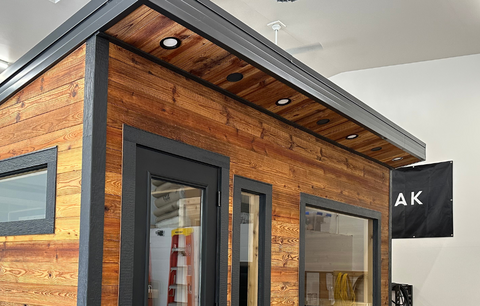
Plumbing codes
If you choose a steam sauna that requires a steam generator, plumbing codes (specifying requirements for installing pipes to ensure proper flow) will apply. Some locales may require that a licensed plumber do the plumbing.
Fire safety
Saunas are hot, humid environments, so fire safety is critical. Building codes specify requirements for fire safety. For example, they may require using fire-resistant materials, especially near the heater or any other heat sources.
Accessibility
Saunas must have accessible exists that is unobstructed. Building codes may have specific requirements for sauna exits to ensure safety when designing them.
These often include removing obstructions, appropriate width for sauna doors, and ramps for individuals with disabilities.
Cost and value of custom saunas
The cost of a custom sauna can vary widely depending on several factors.
However, one might expect to shell out between $9,000 – $50,000 for an outdoor sauna and between $12,000 to $50,000 for an indoor sauna.
Indoor saunas typically cost more than outdoor saunas because your indoor sauna needs to be properly sealed and vented to ensure the nearby areas stay free from excess heat, moisture, and humidity. Conversely, if an outdoor sauna is build to withstand brutal weather and loads of snow, then the price can quickly approach an equivalent-sized an indoor sauna.
While building a custom sauna is a notable investment, it can significantly improve your property’s value when you’re ready to sell.
As a luxury item, saunas have a high perceived value, meaning many people overestimate their cost. Thus, the value a sauna adds to your home during resale would be greater than the actual investment.
Factors that influence the cost of a custom sauna include:
Size
The sauna’s price is directly proportional to its size, as larger saunas require more materials and labor.
For example, a 6-foot by 8-foot two-person sauna can cost around $19,500, while an 8-foot by 12-foot sauna may be $30,000 or more.
Materials
The type of wood, insulation, and other materials you use for your sauna will impact its cost, as higher-quality materials are generally more expensive.
For example, redwood costs $30 – $35 per square foot, while hemlock costs $5 – $10. So, a sauna that is mostly made of redwood will cost more than one that is more hemlock. Heat-modified materials are a way to add strength and durability to the soft woods that are common in saunas
Type of sauna
The different sauna types have varying costs associated with their heating system and construction requirements.
For example, electric heaters come in a range of prices, while wood-burning heaters can be more expensive to install but will save on operating costs in the long run.
Labor
Hiring professionals for installation will add to the total cost. In fact, labor costs usually account for 30% – 50% of the total cost of installing a sauna. The cost of labor depends on several factors, including your location, sauna size, sauna type, materials used in construction, etc.
Permits
Some locales require obtaining a building permit before adding a sauna to a home, and this has cost implications. So, when planning to build a custom sauna, consider the costs associated with obtaining necessary permits.
Additional features
There is no limit to what you can include in your custom sauna to make it match your preferences. These include special lighting, sound systems, unique interior designs, etc. However, these extras have cost implications and will increase your total cost.
Designing custom indoor saunas
Designing a custom indoor sauna involves careful planning to create a wellness space that is functional, aesthetically pleasing, safe, and aligned with your preferences.
Some considerations to guide you through the design process for your indoor sauna include:
Consider the number and preference of users
Custom indoor saunas are typically for personal use. But how many users will be in it at the same time? The first step in designing your sauna is determining the number of users, as this will inform its size.
Next, consider the preferences of the users for seating arrangement and heat levels.
Users’ seating preferences will inform the sauna’s layout, while their preferred heat levels will inform the sauna type.
Typically, a traditional sauna has temperatures of 158 – 194 degrees Fahrenheit, an infrared sauna has cooler temperatures of 100.4 – 149 degrees Fahrenheit, while a steam sauna is even cooler with temperatures of 86 – 122 degrees Fahrenheit.
Choose sauna type
Considering preferred heat levels (and budget), choose the sauna type. Your options include traditional wood-burning or electric sauna, infrared sauna, steam house, and more. Each type of sauna has unique design considerations.
Select the sauna location
After choosing a sauna type, the next step is to select the perfect location for it.
Considerations when selecting an appropriate location for a custom sauna include available space, proximity to bathroom/ shower facilities, and ease of ventilation. Basements, spare rooms, under stairways, or even custom-built extensions are ideal locations for a custom indoor sauna.
Plan the layout
After getting the ideal location, plan how you will arrange the different elements in the space to create your sauna. Important considerations when planning your sauna layout include:
- Entrance: Consider the entry point into the sauna, and ensure there’s a changing area nearby.
- Interior layout: Plan the placement of benches, heaters, and additional features like lighting, music systems, aromatherapy dispensers, etc.
- Ventilation: Design an adequate ventilation system to ensure fresh air exchange.
Choose sauna materials
Choose the materials you want for the construction of your sauna’s walls, ceiling, floor, and benches.
- Walls and ceilings: Sauna walls and ceilings typically feature heat-resistant wood panels. Western Red cedar is a popular wood choice for its durability and natural aroma.
- Flooring: Sauna floors are usually made of non-slip, heat-resistant materials like ceramic tiles or sealed concrete.
- Benches: Clear Western red cedar, clear white basswood, or other heat-resistant wood are popular for sauna benches. You can design them at different heights for various seating preferences.
- Sauna door: There are several door options for saunas. You can choose to have an all-glass door, half-glass door, all-wood door, etc.
Choose your sauna heater
The heater is the heart of your sauna, as it is the element that provides comforting heat. Choose the appropriate size and type of heater based on your sauna type and room size. Then, position it for optimal heat distribution, ensuring you barricade it with a heater guard to prevent sauna users from accidentally coming in contact with it.
Wood heaters, electric heaters, and commercial heaters are common heating systems for saunas.
While some people prefer the tradition of a wood-burning stove, others prefer the convenience of electric heaters.
Create ventilation and drainage systems
Install vents or a small window to allow fresh air in and move excess heat and moisture out. Also, design the floor with a slight slope toward a drain to handle water splashes and ensure easy cleaning.
Add safety features
Consider adding safety devices like a timer and thermostat to ensure your sauna is safe. A timer allows you to control session duration, while a thermostat ensures the sauna does not overheat.
A standard sauna control offers these safety features. Sauna controls come with two dials – a timer and a temperature thermostat control.
You should also include a shut-off switch to cut off power in case of malfunctions.
Improve the ambiance and aesthetics
Add sauna-friendly LED lights, preferably in corners, to create a soothing ambiance. Also, add appropriate custom artwork and stone accents for visual appeal.
Many people also include aromatherapy dispensers for a multisensory experience.
Customization options for custom saunas
Numerous customization options are available to tailor a sauna to your specific needs and preferences.
Some of these customization options include:
Sauna location
You can start your sauna customization by creatively placing it in your house. For example, you may transform a space in an at-home gym into a spa to provide a unique “home fitness center with spa” experience.
You may also add a spa to your master bathroom to provide a luxurious, warm glow to your master bedroom.
Layout
The arrangement of your sauna’s interior elements (especially benches and heater) is one of the first places to start customizations. There are several layouts to choose from.
You can create a heater at the center of a sauna with wrap-around benches, allowing users to sit around the heater.
You may also go for the popular L-shaped layout, with two benches meeting at a corner of the space at 90 degrees to each other.
Heating options
There are different types of sauna heaters. You can select a wood-burning, electric heater, or infrared heater. You’ll find different options for customizing your sauna experience, even within a particular heater type.
For example, when using electric heaters, we love the HUUM models including the Drop, and Cliff. If you prefer wood-burning heaters, you can give your sauna a pleasurable experience with the classic design of the Harvia M3 heater or the more exotic open-stone design of the HUUM Hive Wood heater.

Sauna benches
The material and design of sauna benches allow for lots of customization. You can choose from different heat-resistant wood types for your benches, including red cedar, basswood, etc.
You can also select from different designs, including wall-to-wall, removable/ repositionable, floating, reclining, and curved.
You can customize your sauna using tiered benches – adding two or three tiers of benches for a stadium experience.
You can also customize using bench skirting by choosing to cover the exposed section between the lower and upper benches in a tiered design.
Wall paneling
Sauna walls are made of wood paneling. The paneling material and orientation create different looks, making them good avenues for customization.
In terms of material, you can use clear western red cedar, luminous Nordic White Pine, moody black Taika, and more.
You can combine two or more wood tones for a stunning effect. You can install the tongue and groove Western red cedar horizontally or vertically or combine both orientations to create a unique look.
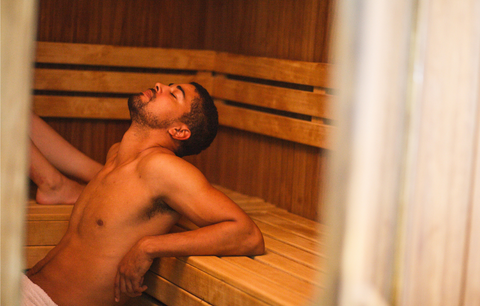
Comfort features
Headrests and backrests are ergonomic features that you can use to customize your sauna. Install headrests at strategic places on benches to support the head when reclining.
Also, add backrests for added comfort during sauna sessions.
Sauna doors
You can select from a wide range of door types when designing yuor sauna. For example, you choose an all-glass door for an exotic see-through experience. You may also go for a half-glass or all-wood door.
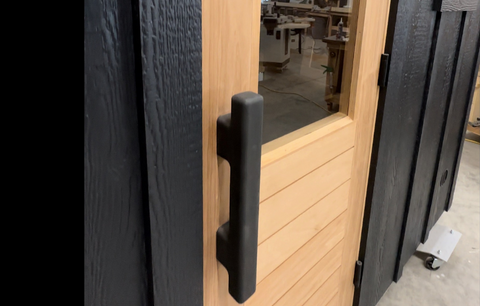
Lighting
Lighting strategically placed in the sauna adds to the overall experience. There are numerous lighting options (lights with incandescent bulbs, LED lights, color-changing lights, etc.) and even more placement options. So, you can use sauna lighting to create a customized space.
Interior decor
The possibilities are endless when decorating the interior of a sauna, just as it is for a home. You can add custom artwork or designs to walls for a unique aesthetic.
You can also bring in an audio system to create a really personal experience. Install speakers or Bluetooth-enabled audio systems for music or guided meditation sessions.
Installation process of custom saunas
The installation process of custom saunas can vary widely depending on the type of sauna and the specific design and features you want.
However, a general outline for installing custom saunas is as follows:
Finalize the sauna design
Work with a sauna architect to finalize the design and specifications for your custom sauna. Then, obtain the necessary permits from yuor local authorities.
Prepare the location
Clear the designated area of any obstructions and ensure the floor is level.
Also, ensure the floor is waterproof to prevent moisture damage. For outdoor saunas, this will mean pouring a concrete foundation. For indoor saunas, install concrete board, waterproof floor membrane, or tile.
Install electricals
Install electrical wiring for lighting, heaters, controls, and any other electrical components.
All electrical work must meet safety standards and local building codes. So, you may want to hire a licensed electrician to handle the electrical work.
Insulate the walls and ceiling
Install insulation. Ensure you use the appropriately sized insulation material to ensure effective heat retention and ensure energy efficiency.
Install the vapor barrier
Install a foil vapor barrier over the insulation. Start from the lower portion of the room and work upward to the ceiling. When installing the barrier in the upper parts of the wall, it should overhang the one below it by at least four inches. Secure the vapor barrier in place with foil tape.
Install the paneling
Install the sauna paneling according to the sauna design. For the first board, nail through the wood into the joists, keeping the tongue away from the wall. For subsequent boards, line the groove with the previous board and nail through the tongue into the joists.

Build the bench
Construct and install sauna benches at various heights, allowing for different seating levels and preferences.
Install heater
Install the sauna heater according to the manufacturer’s instructions.
For traditional saunas, position the sauna stones on top of the heater to create steam when a user pours water on them. When using gas heaters, be sure to check for gas leaks.
Install light fixtures and additional features
Install sauna-friendly LED lighting fixtures, switches, and temperature control thermostats. Add additional features like an audio system, aromatherapy dispenser, or custom artwork.
Complete sealing and finishing touches
Seal the interior wood surfaces with sauna sealant to enhance durability and prevent moisture damage. Then, add finishing touches, such as handles, hooks, and accessories for convenience.
Final checks and testing
Conduct a thorough inspection to ensure all components are installed correctly and securely. Then, test the sauna heater, lighting, and other electrical features to ensure they work as intended.
How to maintain your indoor sauna
Maintaining your indoor sauna is essential to ensure it remains functional, safe, and enjoyable for years to come. Regular maintenance prevents issues, preserves the sauna’s experience, and ensures a hygienic environment.
Some tips on how to maintain your indoor sauna are:
Regular cleaning
Clean different parts of your sauna as follows:
- Benches and floor: Wipe the benches and sauna floor after each use to remove sweat and moisture.
- Walls and ceiling: Clean the interior walls and ceiling periodically with a mild, non-abrasive cleaner to remove accumulated oil and grime.
- Floor drain: Check that the floor drain is clear of debris to facilitate drainage.
- Vents: Clean ventilation openings periodically to ensure proper air circulation.
Heater maintenance
Dust/clean your sauna heater. When using a traditional sauna heater, check stones for cracks and replace them if necessary.
Wood maintenance
Inspect sauna wood walls for any cracks or damage, then promptly make necessary repairs. Also, reapply sauna sealant or wood oil to the interior wood surfaces periodically to maintain their quality and prevent moisture damage.
Safety checks
Test emergency shut-off switches, timers, and thermostats regularly to ensure they are functioning correctly.
Professional inspection
Have your sauna inspected by a professional sauna maintenance service at least once a year. These experts may identify issues that your untrained eye may miss. Then, fix identified issues promptly.
Do custom saunas require a lot of maintenance?
The maintenance requirements of custom saunas vary based on the following:
Sauna type
Sauna types have varying maintenance needs. Traditional wood-burning saunas require regular cleaning to remove ash.
Steam saunas require moderate cleaning to prevent mold growth due to high humidity, and infrared saunas are low-maintenance systems requiring only occasional dusting.
Frequency of use
Saunas that are used frequently will require more regular maintenance. Those used infrequently may require cleaning before each use, especially if they’ve been dormant for a while.
Quality of material
Superior quality materials handle wear and tear better. So, saunas with high-quality materials will have fewer maintenance needs.
Pre-built vs custom indoor saunas, what are the key differences?
Pre-built indoor saunas are prefabricated units that have already been made on an assembly line, while custom saunas are units built on-site.
Pre-built saunas are sold as custom sauna kits. The sauna kit will come with precut and preassembled components, so you won’t have any building to do, making installation easy.
However, you won’t be able to customize your sauna. You also need to ensure your space matches the dimensions of the sauna.
Custom saunas are built to fit your space and preference. You choose the size, wood type, bench configuration, heating system, and additional features.
However, because custom saunas require doing everything from scratch, they’re more difficult and take longer to install.
Let’s look at their key differences.
| Pre-built sauna | Custom sauna | |
| Design | Built on the assembly line of the sauna builder | Built on-site |
| Customization | Limited customization | Can customize every aspect of the sauna |
| Installation | Installation is easier and faster | Installation is complex and takes longer |
| Space requirement | Difficult (or impossible) to adjust sauna size to fit your space | Designed to fit your available space |
| Cost | Lower initial costs and lower lifetime value. | Higher initial costs and higher lifetime value |
Pre-built vs. custom saunas, which is better?
The choice between pre-built and custom indoor saunas depends on your budget, design preferences, and the level of personalization desired.
- Pre-built saunas are ideal for individuals seeking a cost-effective, straightforward sauna experience with limited customization options.
- Custom saunas are best for individuals who desire a unique, tailor-made sauna experience and are willing to spend a little more and have the patience to wait for a personalized sauna solution.
Takeaway: Take your health and wellness to the next level with a custom sauna
Enjoy the health and wellness benefits of a sauna from the comfort of your personal space.
Detailed steps for designing and maintaining a custom sauna are outlined above. However, you’ll be better served engaging professional sauna builders. This is where Nordak Sauna Company comes in!
Nordak Sauna Company is a leading sauna manufacturer and supplier dedicated to promoting relaxation and wellness. We offer custom sauna design and installation services, providing the unique sauna experiences you crave.
Ready to supercharge your relaxation and wellness program with unforgettable sauna experiences? Check out our Custom saunas today!
Written by Nordak Sauna Co.



